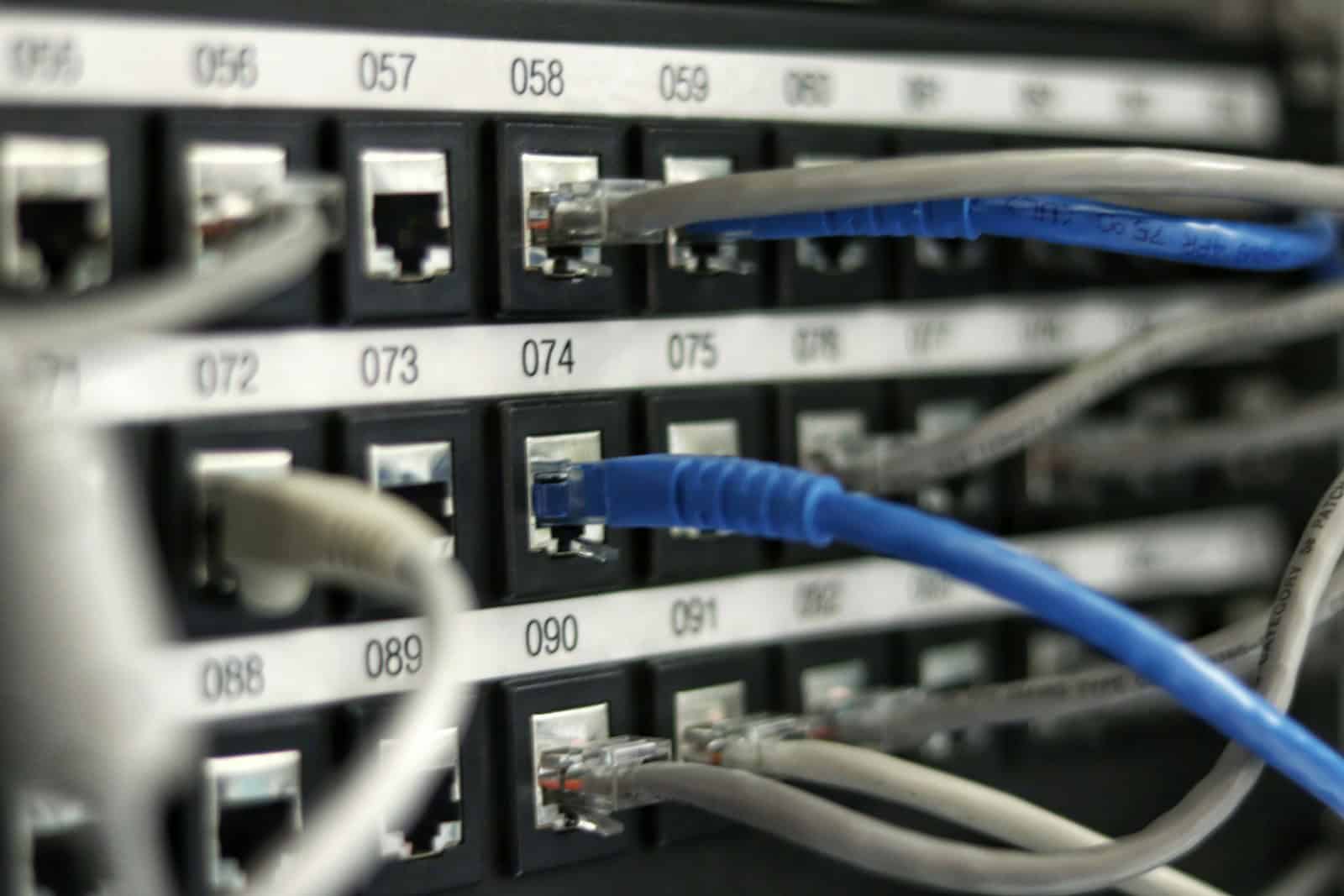Port forwarding is a way to let traffic from the internet reach a specific device in your home or office network. Many people use it for things like gaming, remote desktop access, and hosting websites. This method allows online services to connect to your network and communicate with your devices.
When you set up port forwarding, you tell your router to send certain internet traffic to a particular device in your network. This device could be a computer, a gaming console, or any other device you want to make accessible from the internet. Setting up port forwarding can improve the performance of online games and services that need a direct connection.
Learning about port forwarding can seem tricky at first. It involves understanding what ports are and how to configure your router. Don’t worry; there are simple steps and guides that make setting up port forwarding easier. If you’re new to this, check out this beginner’s guide to get started.
Understanding Port Forwarding
Port forwarding is a method used to allow devices on private networks to connect with external devices. This section covers the definition, workings with NAT and routers, and the importance of IP addresses and port numbers in port forwarding.
Defining Port Forwarding and Its Purpose
Port forwarding, also called port mapping, helps external devices communicate with computers on private networks. This technique maps an external port number on the router to an internal IP address and port. It is often necessary for online gaming, hosting servers, or accessing security cameras from the internet. By directing specific traffic to chosen devices, port forwarding ensures efficient communication and better resource management within a network.
How Port Forwarding Works with NAT and Routers
Port forwarding works with Network Address Translation (NAT), a method used by routers to manage multiple devices using one public IP address. When external data arrives at a certain port on the router, NAT maps this data to the intended internal IP address and port.
Basic Steps:
- A request is sent from an external device to the router.
- The router checks its port forwarding rules.
- The data is directed to the right device within the private network.
NAT helps manage IP addresses while port forwarding ensures the data reaches the correct device.
The Role of IP Addresses and Port Numbers in Port Forwarding
IP addresses and port numbers are essential in setting up port forwarding. An IP address identifies a device on a network, while a port number specifies a particular service or application. When setting up port forwarding, you assign a static IP address to each device. This prevents changes in the IP address, which could break the forwarding rules.
Port numbers classify the type of traffic and direct it accordingly. For example, web traffic usually uses port 80 for HTTP and port 443 for HTTPS. Understanding and managing these elements is key to effective port forwarding. Identifying the right IP address and port number ensures that data packets reach the correct computer service.
Implementing Port Forwarding
Setting up port forwarding might seem tough, but with the right guidance, it can help improve your network. This section explains how to configure port forwarding on different routers, common uses, and how to keep your network secure.
Setting Up Port Forwarding Rules on Different Router Brands
To set up port forwarding, access your router’s web interface. This is usually done by typing the router’s IP address into a web browser. Common router brands have different steps:
Linksys:
- Go to “Applications & Gaming.”
- Click on “Port Range Forwarding.”
- Enter the desired port range.
- Save settings.
Netgear:
- Navigate to “Advanced Setup.”
- Select “Port Forwarding.”
- Enter the service name and ports.
- Save the changes.
TP-Link:
- Choose “Forwarding.”
- Click on “Virtual Servers.”
- Fill in the service port and IP address.
- Save.
Common Applications of Port Forwarding in Networking
Port forwarding has many uses. It allows games like Minecraft to run smoothly by forwarding specific ports.
Web servers use port forwarding to make a local server accessible on the internet. Ports 80 and 443 are often needed for this purpose.
For remote desktop applications like Windows, forwarding port 3389 allows remote access. It is also useful for setting up DVRs and security cameras.
Security Implications and Best Practices in Port Forwarding
Port forwarding can expose your network to risks. Unprotected ports can be entry points for attacks. Use strong passwords and update firmware regularly. This helps protect against vulnerabilities.
Implement DHCP reservations to ensure devices have a static IP address. This makes port forwarding rules more reliable.
Using a port checker can help verify if ports are open. Be careful with what ports you open. Close them if not in use. Secure your network with firewall rules and disable port forwarding when not needed. This reduces security risks.
Unveiling Port Forwarding: Your Gateway to Enhanced Connectivity
Port Forwarding Demystified:
In simple terms, port forwarding is like creating a special pathway through your router’s firewall. It allows specific internet traffic to reach devices within your private network, which would normally be blocked for security reasons. Think of it as giving out a VIP pass to certain data packets, granting them access to your network’s inner sanctum.
How Does Port Forwarding Work?
Each device connected to the internet has a unique IP address and uses various ports to communicate. Port forwarding directs incoming traffic on a specific port to a designated device within your network. This is achieved by configuring your router to recognize the incoming port number and forward the data to the correct internal IP address.
The Power of Port Forwarding: Applications and Benefits
Port forwarding opens up a world of possibilities for your network:
- Remote Access: Securely access your computer or devices from anywhere in the world.
- Gaming: Host game servers on your home network for seamless online gaming with friends.
- Web Servers: Run your own website or online services from your home computer.
- Security Cameras: View your home security cameras remotely over the internet.
- FTP Servers: Share files securely with others over the internet.
Types of Port Forwarding
| Type | Description | Use Cases |
|---|---|---|
| Local Port Forwarding | Forwards traffic from your local computer to a remote server. | Accessing a web server running on your home computer from work. |
| Remote Port Forwarding | Forwards traffic from a remote server to your local computer. | Accessing a file on your home computer from a remote location. |
| Dynamic Port Forwarding | Automatically assigns a port number for each connection. | Useful when your internet provider assigns dynamic IP addresses. |
Port Forwarding Best Practices
- Security First: Limit port forwarding to essential services and use strong passwords for remote access.
- Firewall Configuration: Ensure your router’s firewall is configured to allow incoming traffic on forwarded ports.
- Port Selection: Choose less common port numbers to minimize the risk of unauthorized access.
- Update Firmware: Keep your router’s firmware updated for optimal security and performance.
- Monitor Activity: Regularly check your router’s logs for any suspicious activity.
Port Forwarding: A Powerful Tool with Responsibility
Port forwarding can be a powerful tool for enhancing network connectivity and enabling various applications. However, it’s important to use it responsibly and with proper security measures in place.
Frequently Asked Questions
Port forwarding allows devices on a local network to be accessed from outside, improving online experiences and connectivity. It’s important to understand how it influences security and the specific steps needed for setup.
How does port forwarding enhance online gaming experiences?
With port forwarding, gamers can have better connectivity with game servers. This helps reduce lag. Players can host their own game servers, allowing friends to join easily, which improves gameplay.
What are the security implications of enabling port forwarding?
Enabling port forwarding can expose your network to the internet. This may increase the risk of cyberattacks. Users should only open necessary ports. Using firewall rules and continuous monitoring helps manage these risks.
In what scenarios should port forwarding be turned off?
Turn off port forwarding when it is not needed for ongoing activities. This prevents unnecessary exposure. If a device no longer requires remote access, disabling port forwarding for that device enhances security.
How does port forwarding differ from using a VPN?
Port forwarding and VPNs both allow remote access. Port forwarding exposes specific ports to the internet for access. VPNs create a secure tunnel for all data between the device and the network. VPNs offer more security.
What steps are involved in configuring port forwarding on a router?
- Access the router’s settings, usually via an IP address in a web browser.
- Navigate to the port forwarding section.
- Enter the port number, local IP address, and choose the protocol (TCP/UDP).
- Save the changes and restart the router if necessary.
Can port forwarding improve connection stability for remote services?
Yes, port forwarding can help maintain stable connections to remote servers. It directs incoming traffic to the correct device within the network. This makes remote management tools and services more reliable.
For more detailed guides, you can check LazyAdmin’s step-by-step guide and G2’s beginner’s guide.







